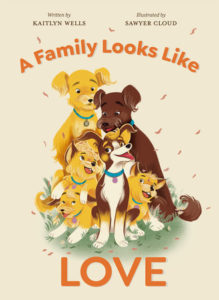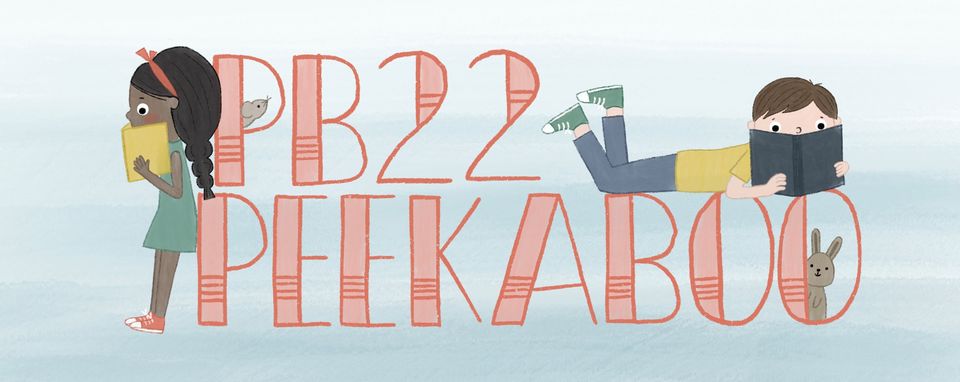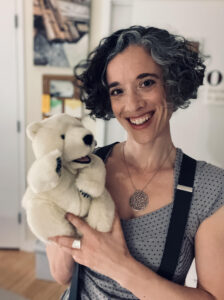
I’m especially excited about this month’s Author Interview because Caron Levis wrote one of my favorite picture books–you’ll figure out what it is easily enough in a moment!
In addition to writing terrific picture books, Caron’s stories for teens and adults have been published in magazines and anthologies, her short-plays have been selected for several festivals, and the film adaptation of Attendant won Best Short in Sunscreen Film Festival West (2018) and was selected for the Garden State Film Festival. Pretty cool, right? Caron’s also a professor at NYU and The New School’s Creative Writing MFA program where she serves as the advisor for the Children/YA concentration.
Caron has an LMSW from Hunter College and has facilitated young people’s loss and bereavement groups for The Jewish Board. After many years as an arts educator, Caron now loves using acting and writing to teach social, emotional, and literacy skills to students of all ages through her author workshops. Having trained in acting and dabbled in playwriting, Caron “enjoys turning theatre techniques into writing tools for groan-ups through her workshop Act-Like-A-Writer.
With that, let’s get to that interview and learn more about our new writer pal, Caron!
RVC: What were some of those early formative experiences that got you on the pathway to being a writer?
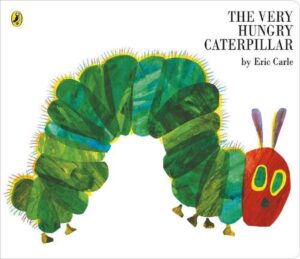 CL: I have this cassette tape recording of my mother when I was around two or two and a half. She read to me a lot every night–she always read to me lots of picture books. Anyway, she was leaving me with a non-family babysitter for the first time, so she thought it would be helpful to record herself reading our nightly picture books. The one that stuck with me when I listened to it was The Very Hungry Caterpillar. It was amazing because my mother’s Brooklyn accent was so strong, which made it fun to listen to.
CL: I have this cassette tape recording of my mother when I was around two or two and a half. She read to me a lot every night–she always read to me lots of picture books. Anyway, she was leaving me with a non-family babysitter for the first time, so she thought it would be helpful to record herself reading our nightly picture books. The one that stuck with me when I listened to it was The Very Hungry Caterpillar. It was amazing because my mother’s Brooklyn accent was so strong, which made it fun to listen to.
You can hear me in the background, calling out the words that I knew–you know, “hungry!” “cherry pie!” that sort of thing. Clearly, I was lucky to have that time in my life where I absorbed so many words and books. As we now know through research and science, that’s one way you learn to read and enjoy books.
I also had a Brooklyn grandmother who was a kindergarten teacher. She loved to read with me. As I got older and became a reader myself, we’d watch Wheel of Fortune together. That all helped me fall in love with words.
RVC: When did you first realize you’re a writer?
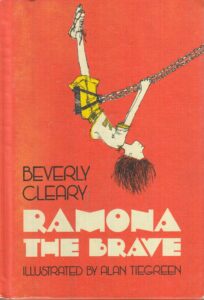 CL: The moment cemented in my memory is reading Ramona in second grade and feeling like someone knew me. I enjoyed feeling very validated in the messiness of Ramona. I realized I wanted to write books for other kids so they could know that feeling, too.
CL: The moment cemented in my memory is reading Ramona in second grade and feeling like someone knew me. I enjoyed feeling very validated in the messiness of Ramona. I realized I wanted to write books for other kids so they could know that feeling, too.
RVC: That’s awesome.
CL: I was lucky. I had wonderful elementary school teachers who validated me, or at least I read it that way. Looking back at my journals, there’s not necessarily a budding writer there. There’s a lot of “Can you actually write MORE next time?” But they were always really encouraging.
I’m still in touch with my second- and fourth-grade teacher. She’s in second grade now, still teaching at the same school, and with each new book of mine, she’s invited me to visit her classroom. It’s such a special treat to be able to do that.
RVC: So, along the way, you got all kinds of degrees and training that seemed you had a non-writer path in mind.
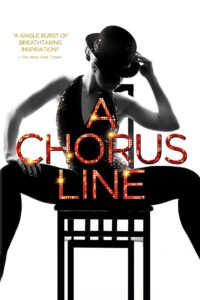 CL: I always wanted to be writer, but in elementary school, though, I got taken to A Chorus Line and The Fantasticks, because I lived in New York City. I fell in love. “I’m going to be an actor!” I decided.
CL: I always wanted to be writer, but in elementary school, though, I got taken to A Chorus Line and The Fantasticks, because I lived in New York City. I fell in love. “I’m going to be an actor!” I decided.
Around sixth grade, I wrote a term paper on a famous case of pretty intense child abuse and neglect that I learned about from the TV coverage. It really shook me. I thought about it a lot. I remember thinking, “Why isn’t the world literally stopping to fix this for kids?” That led me to thinking about being a counselor, or at least somebody who worked to help kids.
RVC: That’s a lot of different directions.
CL: I’m still trying to sort it all out! It all comes together though in my author workshops for kids and adults, where I use acting and writing to explore emotional skills and subjects.
RVC: How did that morph into you becoming a published writer?
CL: As an undergrad, I was studying creative writing with the goal of writing short stories and plays. I was taking acting classes, too, and absorbing child psychology through a couple of classes. I was always working with kids through children’s theater, which was influential for me. I combined those loves. I performed a show that was about dating, violence, healthy, unhealthy relationships.
Anyway, I graduated with my undergrad degree while remaining fairly lost about how to pursue those things. Nobody really gave me directions such as “Okay…THIS is what you should do next.”
RVC: Too few students get that kind of useful advice, it seems.
CL: I puttered around, and I’d get jobs in education, doing various things for both love and money. I was writing fiction plays and stuff for kids–a bunch of different things. And I was auditioning and taking part in super off-off-Broadway stuff. I was trying everything.
At some point, I decided, “Okay, I’m not really making headway on trying to do all of these things.” I started feeling that I needed to pick something to dive into and pursue. I realized that I wasn’t really pursuing my acting career aggressively like I could’ve been. I had knowledge. And I had contacts I wasn’t using. Honestly, I found the auditioning process to be soul sucking, and I kept walking out of auditions because I’d look at the script and decide, “I don’t want to do that.” I didn’t want to do commercials either, which is how you earn money as an actor.
I remembered advice I’d gotten during acting training in my undergrad classes. At the time, it made me so mad. A visiting teacher said to only pursue a career in acting if there’s nothing else in the world you can do for work that will bring you joy. Only do it if you’d truly be miserable without it.
I decided I was going to give that a try–I’d completely drop the goal of acting for six months. I started working for a company that hired actors to teach conflict resolution and communication skills in K‑12 schools through push-in programs before SEL was an accepted and understood term. I loved that work so much. It just filled me.
I checked in after six months, and I wasn’t miserable about not acting. I still loved acting as a craft, but I was more in love with the skills and other things it gave me that I could incorporate into my educational work. Acting totally informs my writing process. And it informs me as a human, quite frankly.
RVC: And that’s when you turned to writing?
CL: I was writing more. I tried giving up writing a few times, too, but I’m always too miserable without. So, I’m stuck with it.
RVC: I’ve been there!
CL: I wanted to be a novelist and a playwright and be writing for children all at the same time. At the time, I was still in my 20s and I was working in this wonderful school, in a kindergarten classroom. I loved that. And even when I was writing for kids, I was writing YA and MG. I’d never thought of myself as a picture book person because I wasn’t a visual artist. But I was absorbing so many picture books. I’ve always loved them and never stopped reading them.
I ended up with a notebook full of ideas from students I was working with, and one in particular was really, really sticky. It came from a chat with a kiddo who was feeling blue. I decided, “You know what? I think I want to focus on writing for children.” When I finally said it out loud, everyone around me was like “Duh!”
RVC: Hah!
CL: That led me to reading more intentionally, and checking out books on writing for children, and that led me to SCBWI back when they were borrowing space in an office around Union Square. I went to a few talks with editors, and that led me to finding my first writing-for-children writing group. Truly wonderful folks.
Two of the women there kept nudging me to go to the New School MFA Writing for Children and Young Adults program. At the time, I said, “I’m not going to graduate school for writing!” That seemed like a really bad idea. But I ended up there, and it was wonderful. It was a great investment of time and money. I met other like-minded people, and I got to study with David Levithan, Sarah Weeks, Tor Seidler, and Susan Van Metre.
RVC: Were you submitting work at the time?
CL: Before I got to MFA program, I’d written a few picture books and sent them out old-school style in the actual mail with SASEs [self-addressed stamped envelopes] and gotten a bunch of rejections. And the one that meant most to me was for a book based on sadness, Stuck with the Blooz.
I keep those rejection letters., When I visit elementary schools, I bring those letters and read them with the kids. Some are form rejections, and some are encouraging. I had one amazing editor who asked for an exclusive and held it for a few months, but finally passed. And I, of course, got totally stuck with my own blues, but kind of came out of it thinking, “Oh, that was close.” That’s when I ended up with the writers group and the MFA program. But at the time, the business was telling me that picture books weren’t selling, and breaking in with a picture book was impossible. So, I was working on YA material instead. My plan was to finish the YA book and look for an agent.
RVC: I’m guessing the plan didn’t go as planned?
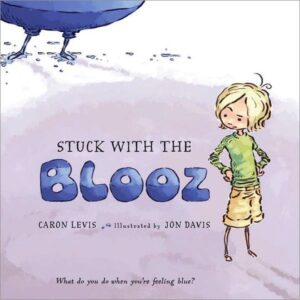 CL: Exactly. What happened instead was the kind of luck you get when you’re working for it. I ended up being introduced through someone to Adah Megged Nuchi, an editor who just got the power to acquire books at her job at Houghton Mifflin. I sent my picture book manuscript to her, thinking it was a long shot.
CL: Exactly. What happened instead was the kind of luck you get when you’re working for it. I ended up being introduced through someone to Adah Megged Nuchi, an editor who just got the power to acquire books at her job at Houghton Mifflin. I sent my picture book manuscript to her, thinking it was a long shot.
She loved it. And she fought for it. I think it was about eight months of waiting but I got a contract.
The idea for that book–Stuck with the Blooz–came to me 10 years before publication. I still have the notebook from that kindergarten class where I jotted down that idea.
RVC: I save notebooks like that, too. Just in case.
CL: I hope the wait’s not that long for everyone else. But I loved how it came out. It was worth the wait.
RVC: What’s the most important lesson that book taught you?
CL: I had this weird belief that you’re supposed to be really excellent at something before you announce that you’re trying to do it. It couldn’t be worse thinking. Find other writers to support you sooner than I did. Get out there.
RVC: Joining SCBWI can help.
CL: Absolutely. SCBWI, a class, an MFA program, a writer’s group—whatever works for you.
RVC: What happened next?
CL: I was reading a lot at the time, really absorbing all these books. But I don’t think I understood how to read like a writer the way I do now. Instead, I was engaging and listening to the kiddos which I just enjoyed doing so much. And then letting my imagination go.
I learned persistence, as well, both in the drafting and the craft, and obviously in pursuing publication.
RVC: Amen to that.
CL: Another writing lesson I learned is that ideas are plentiful. A lot of them can come in. For me, the hard work isn’t coming up with ideas but rather figuring out which ones have enough juice to become a book and are important enough for me to stick through all of the rough parts of the writing and the business.
RVC: You mentioned “reading like a writer.” How does one do that?
CL: That’s one of the best things I got from grad school–learning how to read books like a writer, which is to figure out the names of the craft elements. I mean that both objectively–like what makes something work–but also just for you, as in when you find something that you think is awesome, how do you identify it so you can use it? It’s pulling the story apart to figure out what’s actually being done, such as how to infuse emotion at the line level.
RVC: What is something about your writing or revising process that might surprise people?
CL: It can be really long. I revise forever. This reality wouldn’t surprise established writers, but if you’re new to writing or if you’re a young reader and you learn this? When I explain this in schools, kids look shocked and teachers love having this as a reference when they ask students for more drafts.
RVC: Care to share a bit more about your revision process?
CL: My revision process is very nitpicky. I go over and over things. You have to kind of tear it away from me. With my last few books, my very patient editor has let me nitpick to the very end.
There’s always a place that I get to that’s what I call “the pit of despair,” where I can’t figure something out, or it’s not working. If it’s a contracted book, I now have the experience of knowing that it’s merely part of my process. That doesn’t prevent me from being in the pit of despair, but I have this other part of my brain that’s saying, “Oh, here you are. This is THAT part. You’ll be here for a while.” But I know I’ll figure something out.
RVC: I want to talk about one of my favorite books, which is Ida, Always. I first heard it when Emma Ledbetter (read her OPB interview here!) read the entire thing aloud at an SCBWI conference event in Orlando some years back. She included spreads via an overhead projector, too.
RVC: Ah, that’s right–I remember that fact now. She clearly loved your book and was using it as an example of great writing. People in the audience were literally crying over it–not fake crying but real crying.
CL: Wow.
RVC: Please tell me how that book came about.
CL: People knew I was interested in social emotional learning for a long time, and they started asking me if I’d considered writing something that deals with death–specifically death and grief. A neighbor once asked this because their elder cat was ill. “I have no idea how to talk to my four year old about this. Have you ever thought about making a book to help with this?” Stuck with the Blooz had come out by this point and during a school visit in Newtown, Connecticut, a teacher asked me about that topic as well.
Meanwhile, I also had that notebook where Stuck with the Blooz came from, and I saw that I’d written about a moment that struck me. During playtime, a group of kindergarten students constructed an in-depth funeral for a bug. They set up seats, they gave eulogies, and at one point, somebody said, “And now we’re supposed to cry.” It was incredible.
And then my editor from Blooz who knew I was playing around with this type of idea sent me an article about Ida, the polar bear that died. Gus and Ida lived in Central Park Zoo for a very, very long time, which is also near where I grew up.
Those two things came together. It just felt like the perfect vehicle to explore the story I wanted to because while there were books about death, they tended to focus very specifically on grandparents or a pet. I wanted one that could be open for all kinds of relationships.
RVC: It’s so lucky that your editor sent that article to you. How did the writing process go?
CL: When I started, I was thinking about the story being after the death of Ida, with Gus being there, and having the main character be a child who visited Gus. I wrote many drafts that way, and it was sort of inspired by a photo and an article I’d seen. Plus, I visited Gus. It was just me and Gus hanging out when I did that.
I didn’t have an agent, by the way, but my wonderful editor was looking at this uncontracted manuscript because she wanted to publish it. Yet it wasn’t quite working. I don’t remember exactly what happened, but I’m going to give her the credit because she probably posed the question–since the story is really about the two bears, can they be the main characters?
I took the story back and spent some time making it about the two of them. That took a while. Eventually, I had a bunch of what you see now, but my editor said that we need to love their relationship before we start losing Ida. That’s when I started thinking about establishing their bond a lot more because it’s easy to think, “Well, OF COURSE everyone’s going to be engaged and moved by someone losing someone they love,” But you need to let people feel what is precious. It’s an idea I’ve carried with me since. Make sure you’re establishing what we care about before the challenges arise.
At some point, I discovered the city was how they connect. It became not quite another character, but a representation of the connection between them.
RVC: What were some of the other challenges you were facing?
CL: It was important to me to use the word “die.” In fact, I wanted to use it twice, but that didn’t end up happening. Euphemisms have their place, for sure, but with a lot of kids, they can actually lead to more emotional difficulties because they can be taken literally. For example, “just went to sleep” can at times cause very young kids to worry about their parents “going to sleep” or themselves falling “asleep.”
It was important to me to use the correct word, but also to do it gently. I’d read the story to imagined kids to see if I felt like I was being dishonest or too harsh.
RVC: Ida, Always has serious emotional resonance. In your mind, who sets the standard for books like this? Who do you recommend when you want to show someone the true level of emotion a picture book can generate in a reader?
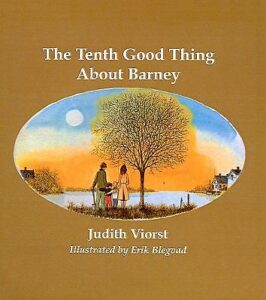 CL: There’s just so many people who do it well. It takes my breath away. But who comes to mind right now? A writer who surely influenced me–though I wasn’t consciously aware of it at the time–was Judith Viorst. I felt lucky that I somehow didn’t make that connection while I was writing Blooz or Ida because I realized later, “Oh, I’ve been trying to be her because her great Alexander books are about being sad. And The Tenth Good Thing About Barney is about death.”
CL: There’s just so many people who do it well. It takes my breath away. But who comes to mind right now? A writer who surely influenced me–though I wasn’t consciously aware of it at the time–was Judith Viorst. I felt lucky that I somehow didn’t make that connection while I was writing Blooz or Ida because I realized later, “Oh, I’ve been trying to be her because her great Alexander books are about being sad. And The Tenth Good Thing About Barney is about death.”
In terms of recent books, I like Jessixa Bagley’s Boats for Papa. It’s just gorgeous, and she makes some interesting emotional choices. It’s a good example of creating characters that has enough distance from real life and events that allows a young reader to move forward emotionally into the book as opposed to feeling like they need to be protective.
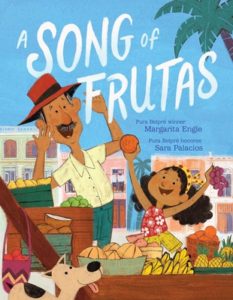 Anastasia Higginbotham has very different kinds of books. They’re much more direct explorations and so useful. And there’s A Song of Frutas by Margarita Engle and Sara Palacios. It’s such a gorgeous book that deals with family and also separation.
Anastasia Higginbotham has very different kinds of books. They’re much more direct explorations and so useful. And there’s A Song of Frutas by Margarita Engle and Sara Palacios. It’s such a gorgeous book that deals with family and also separation.
Then, of course, you have The Rabbit Listened. Cori Doerrfeld just nails it. That book is one of my favorites.
RVC: Let’s talk about your new book, Feathers Together, which isn’t so much about death as it is about separation and ambiguous loss.
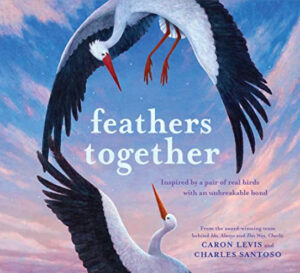 CL: This was a doozy. It’s the third animal book I’ve done with Charles Santoso, and we have a fourth one coming out next year that features elephants.
CL: This was a doozy. It’s the third animal book I’ve done with Charles Santoso, and we have a fourth one coming out next year that features elephants.
Feathers Together has been the hardest, longest, most tumultuous revision of any book I’ve done. And, of course, it was one of the ones that I thought was going to be the easiest.
RVC: Isn’t that always the case? Tell me more!
CL: I was very purposely trying to come up with another story that was inspired by a real-life animal that I could pitch to Emma [Ledbetter] and have Charles [Santoso] illustrate. For the first time, I was intentionally seeking an idea.
I was staying with my aunt while doing book research and she said, “This friend of mine sent me the cutest video about these ducks.” Now, there’s so many adorable animal relationship videos out there, and you could spend your life watching them, but as wonderful as they are, most don’t have a real story in them. It turned out that they weren’t ducks but rather storks, and their story was incredible. I was in love with it for so many reasons.
The real story takes place in Croatia, when a man found a female stork whose wing was injured by a poacher–she’d been shot and couldn’t fly anymore. She couldn’t get fish, and she couldn’t get up to a nest. So, the man took her in, and he created a nest for her with a ramp because they like to nest up high. What Charles created for the book is pretty close to what it really looks like.
RVC: I’m not surprised. Illustrators often do as much–or more!–research as their writer partners.
CL: She couldn’t migrate. So, the man took care of her in the winter. I’ll share the real story with you because it goes into making choices about the book.
The two storks had babies, and the human man and the male story helped her raise the babies and teach them to fly. But each year, for 19 years, this male stork would migrate to South Africa with the rest of the flock and bring the babies with him over 8000 miles and return to Croatia later when the weather was right.
This story struck me on multiple levels. It has the relationship with the human and her that was just so incredibly moving. And then there’s the forced separation, which was my primary interest. I immediately was thinking about kids that I knew and families I worked with and how they had to deal with separation from the military life, from immigration, etc. For some people, separation is just a consistent part of their lives. It’s interesting, too, that I wrote this before the pandemic.
RVC: Which created all kinds of separations.
CL: I also saw in this story a way to address gun violence because the poacher had shot her. There was the whole story of chosen families with this wonderful man Stjepan taking Malena in. The book also deals with the way injury or disability can affect relationships on both sides–not being able to do things that were planned.
At first, I tried to write all of these ideas into the same 40-page picture book. I tried to do that for months and many revisions. On maybe the fifth revision, my editor helped me realize I needed to focus on the separation. That while I can touch upon everything, I couldn’t responsibly go deeply into everything at the same time.
So, I had to let go of this huge part of the story that I’d wanted to tell and that took me a while. It was a big part of that long process.
RVC: That had to be hard.
CL: I was trying to stay true to my original vision, but it created too many stories to tell, which hearkens back to the lesson I learned with Ida about establishing the relationship first. Before you know the loss or the event that is the bulk of the story, you need to have that connection. There wasn’t enough real estate in the picture book format to go through Malena discovering and forming relationships with the human, and then forming a relationship with Klepetan and then losing him. You have to make these time frame choices for your book. What is the most important part of the story? Where does it need to actually start?
So, I changed some details as I fictionalized the story. It’s inspired by real-life animals. It’s not nonfiction, however.
RVC: That’s a huge difference.
CL: I started out with them just being friends. Then I had to make a choice, and I decided to focus on the aspect I really loved–that this was a long term, seasonal thing. These were hard choices, but I had to make them or the emotional resonance would be lost. I knew the emotional aspect that I wanted to create though getting there took SO many drafts.
RVC: Are you open to confessing to how many drafts you have for Feathers Together?
CL: It’s fair to say dozens of drafts. For sure.
Some are big revisions and other times they’re just line-level revisions. But because of the emotional aspect of this, I spend so much time on one line or one moment because that’s the thing with picture books–you’re trying to get it as succinct as possible. I’m constantly trying to get them shorter but also be nuanced.
RVC: Not an easy task.
CL: Not for me. But I love it. I love doing it. And it’s meaningful to me.
RVC: I hear you there. Now, one final question for this part of the interview. What are you working on next?
CL: Charles is now doing his part working on Mighty Muddy Us, which is our book about elephant siblings. I just saw sketches for it and WOW, they’re amazing. It’s another inspired-by-true-life animal tale about a young elephant with a birth injury and how he gets along with his older sister. It’s about that relationship and how your sibling roles get established, and how, as your relationship ages, you can get stuck in these roles, and that can cause conflict, and about how they navigate it.
I’ve got another idea I’m very excited about, but my editor hasn’t seen or heard about it yet, which is why I’m not talking about it specifically. Just crossing fingers.
RVC: Okay, Caron. It’s time for the LIGHTNING ROUND. Let’s get zippy and zoom right along. Are you ready?
CL: Let’s do it!
RVC: What outdated slang do you use on a regular basis?
CL: Geez louise.
RVC: What word do you always misspell?
CL: Oh, here’s a good one for me to confess. I can’t even say it, and I use it in my books all the time! Onomatopoeia.
RVC: What moment from a picture book do you wish were real?
CL: One of my early favorite Hans Christian Andersen stories has a little girl whose flowers are wilting, yet they come to life at night and they all dance at a ball. I always wanted to go to that ball and I think I still do.
RVC: Which picture book author would you want to write your life story?
CL: I’m going to cheat and just say Julia Sarcone-Roach because she knows me. And I know she’d be very kind. And the story would be beautiful. And there’d be lots of animals in it.
RVC: What picture book do you recommend for those who don’t normally read picture books?
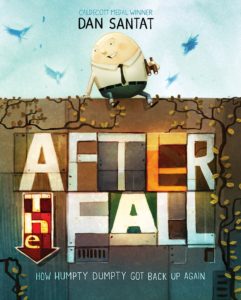 CL: There’s so many. I guess…After the Fall by Dan Santat, because I feel we could all use this beautiful encouragement to climb back up the wall right now.
CL: There’s so many. I guess…After the Fall by Dan Santat, because I feel we could all use this beautiful encouragement to climb back up the wall right now.
RVC: Six words that speak to your picture book philosophy.
CL: Seriously playful work for important people.
RVC: Thanks so much, Caron. This was a real pleasure.



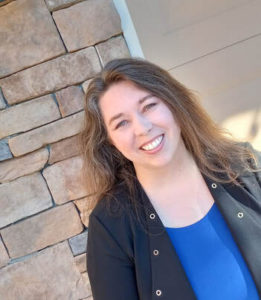 Welcome to Roxanne Troup, the subject of our September Author Interview.
Welcome to Roxanne Troup, the subject of our September Author Interview.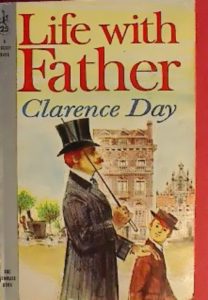
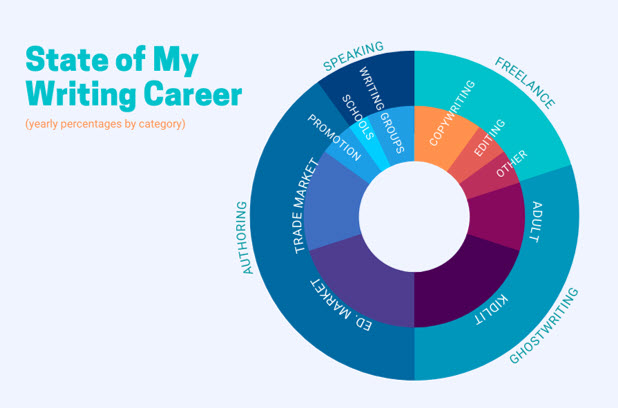
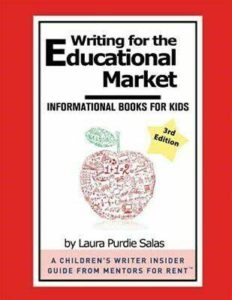
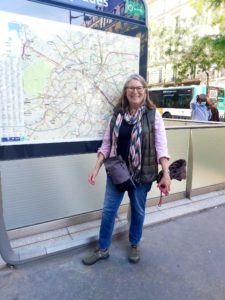 This month’s Author Interview is with Linda Elovitz Marshall, who’s a “writer of books for young children and other cool stuff.” I know her from a previous critique group and from Jane Yolen’s Picture Book Boot Camp. With all the success Linda’s having lately, it seems the right time to find out why.
This month’s Author Interview is with Linda Elovitz Marshall, who’s a “writer of books for young children and other cool stuff.” I know her from a previous critique group and from Jane Yolen’s Picture Book Boot Camp. With all the success Linda’s having lately, it seems the right time to find out why.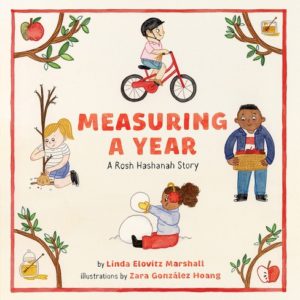
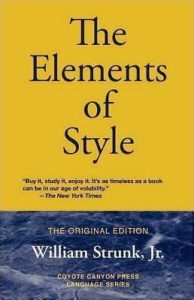
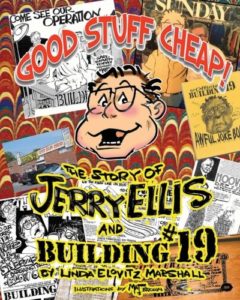
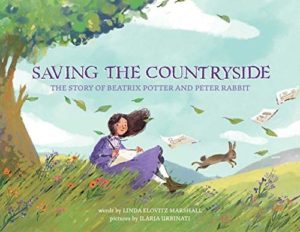
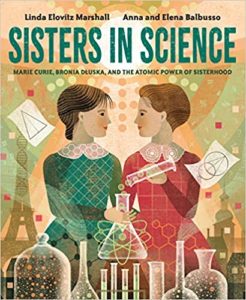
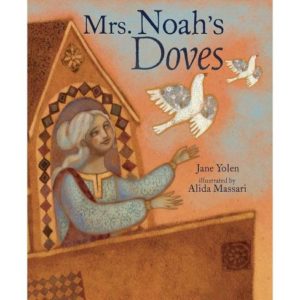
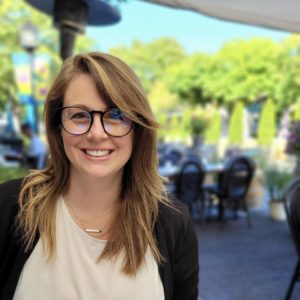 This month’s Author Interview is with Jocelyn Watkinson. The idea for her debut picture book–
This month’s Author Interview is with Jocelyn Watkinson. The idea for her debut picture book–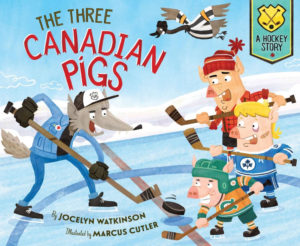

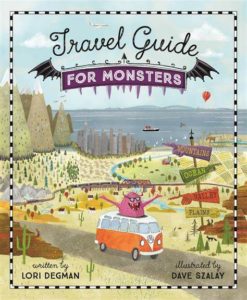
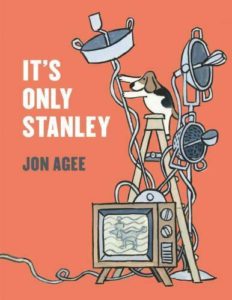
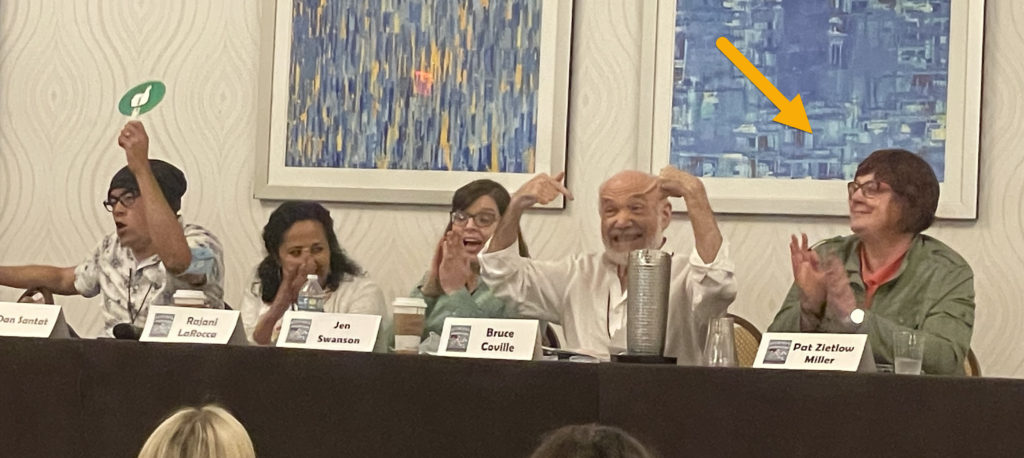
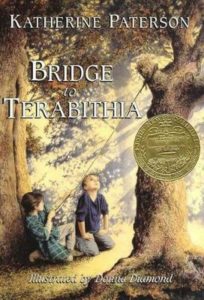
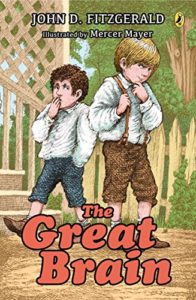
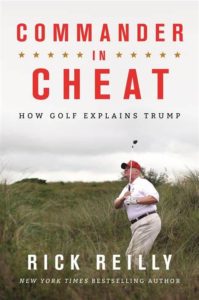
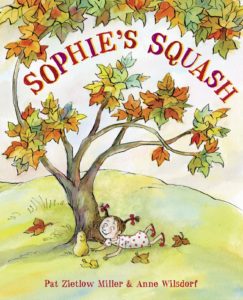
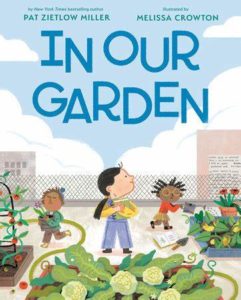
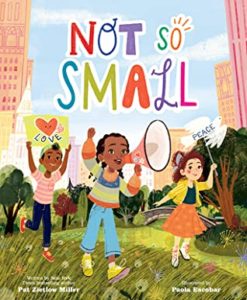
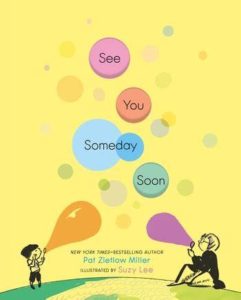
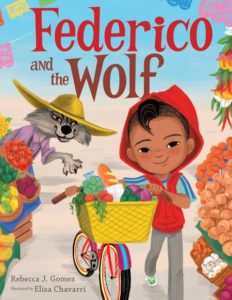
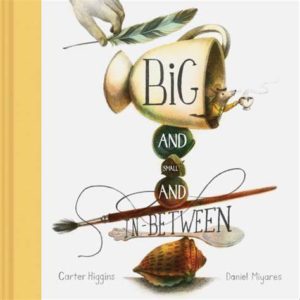
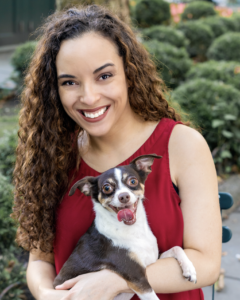 This month’s picture book author is yet another journalist—we’ve got quite a surprising streak going here! Welcome to Kaitlyn Wells, an award-winning journalist whose work has been featured in The New York Times, The Wall Street Journal, and The Washington Post, among others. Since she’s an expert on diverse literature, you can readily find her writing about that at The New York Times Book Review, BookPage, and Diverse Kids Books.
This month’s picture book author is yet another journalist—we’ve got quite a surprising streak going here! Welcome to Kaitlyn Wells, an award-winning journalist whose work has been featured in The New York Times, The Wall Street Journal, and The Washington Post, among others. Since she’s an expert on diverse literature, you can readily find her writing about that at The New York Times Book Review, BookPage, and Diverse Kids Books.